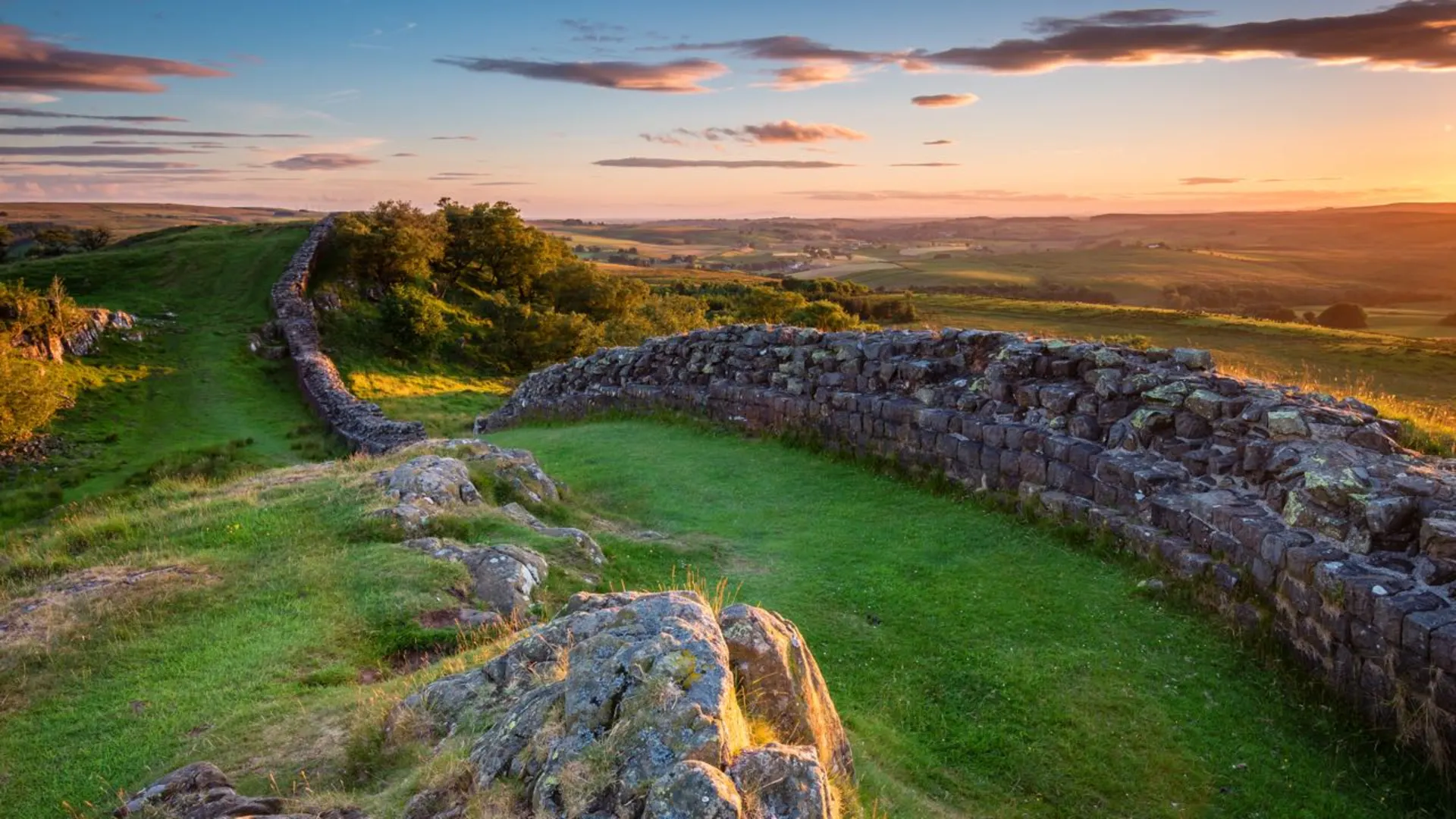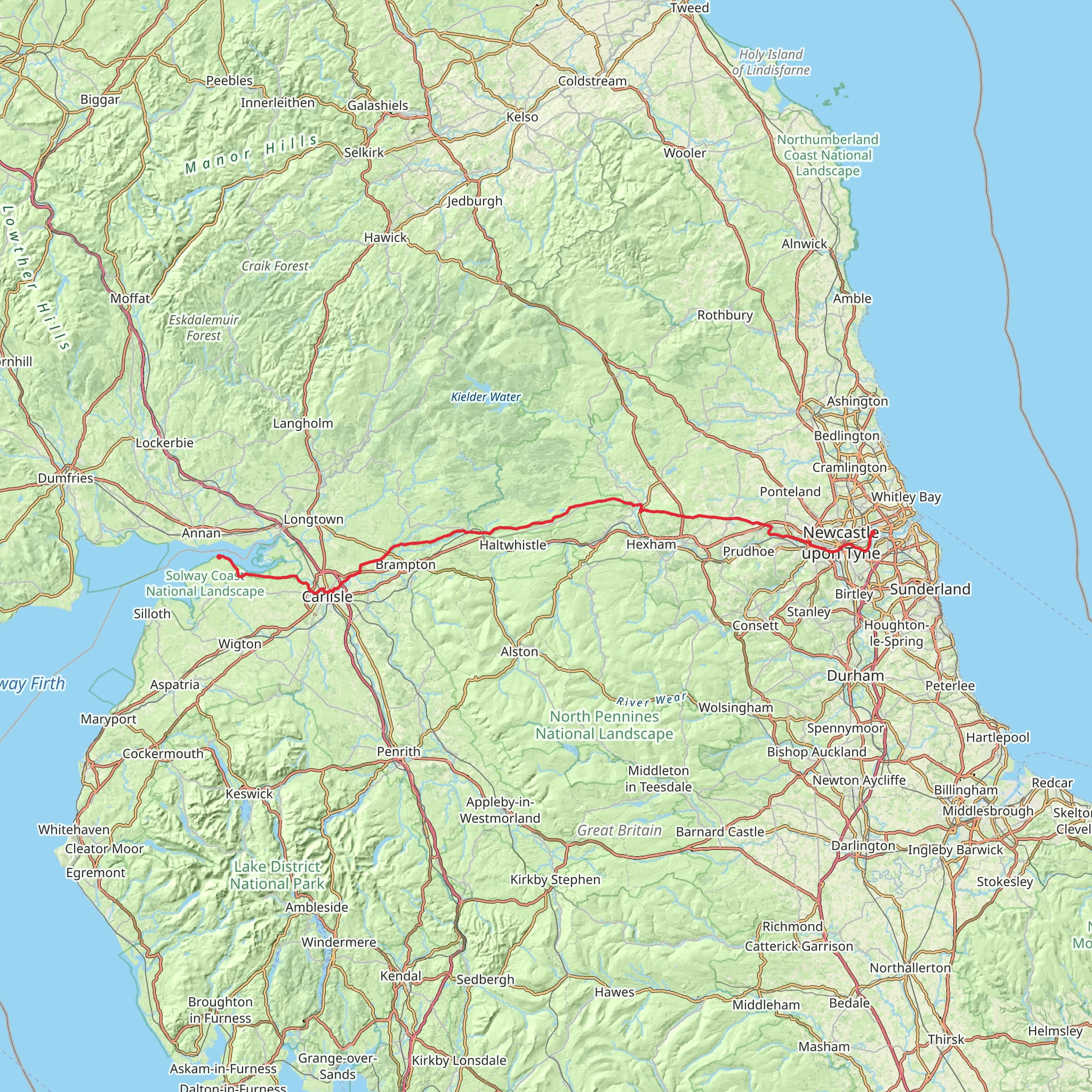Download
Preview
Add to list
More
138.7 km
~6 days
1187 m
Multi-Day
“Embark on a historic 86-mile trek along Hadrian's Wall, brimming with Roman legacies and diverse British vistas.”
Spanning approximately 139 kilometers (86 miles) with an elevation gain of around 1100 meters (3609 feet), Hadrian's Wall Path is a captivating journey through British history, nature, and landscapes. This point-to-point trail, starting near Tyne and Wear in England, follows the historic line of Hadrian's Wall, the Roman Empire's northernmost boundary.
Getting to the Trailhead
The eastern trailhead is situated near Wallsend, Tyne and Wear, which is accessible by public transport. Visitors can take the Tyne and Wear Metro to Wallsend Metro Station, which is a short walk from the start of the trail. For those driving, parking is available in the vicinity of the Segedunum Roman Fort, which also serves as a significant landmark and museum at the trail's beginning.
Historical Significance
As you embark on the trail, you're walking alongside a UNESCO World Heritage Site. Hadrian's Wall was constructed under the reign of Emperor Hadrian in AD 122 and stretched across the width of Britain. The path takes you past ancient Roman forts, milecastles, and turrets, offering a tangible connection to the past.
Navigating the Trail
The trail is well-marked, and hikers can use the HiiKER app for detailed maps and navigation assistance. The path traverses a variety of landscapes, including urban areas, rolling fields, and rugged moorland.
Key Landmarks and Sections
- Urban Beginnings and River Tyne: Starting in an urban setting, the trail follows the River Tyne, allowing hikers to ease into the journey. - Heddon-on-the-Wall to Chollerford: This section includes a mix of countryside and small villages, with a gradual ascent leading to more open landscapes. - Northumberland National Park: As you enter the national park, the trail becomes more remote, offering expansive views of the surrounding countryside. - The Central Section: This is where you'll encounter the most significant elevation changes, with the path weaving up and down the crags. The Sycamore Gap, featuring a lone tree set in a dramatic dip, is a notable landmark here. - From Greenhead to Carlisle: The trail flattens out somewhat as you approach Carlisle, with pastoral scenes dominating the landscape. - Carlisle to Bowness-on-Solway: The final stretch to the western terminus at Bowness-on-Solway is characterized by flat marshlands and views of the Solway Firth.
Nature and Wildlife
The path offers a chance to see a variety of wildlife, including native bird species such as skylarks and curlews. The changing habitats from urban to countryside to coastal areas provide a rich biodiversity for nature enthusiasts.
Preparation and Planning
Hikers should be prepared for variable weather conditions, especially in the more exposed sections. Waterproof gear is essential, and layers are recommended to adapt to changing temperatures. Accommodations range from camping to bed and breakfasts, so planning ahead is crucial, especially during peak seasons.
Conclusion
Hadrian's Wall Path is not just a hike; it's a journey through time, offering a unique blend of history, culture, and natural beauty. With proper preparation and respect for the trail's heritage, hikers can enjoy a memorable experience traversing this ancient landscape.
What to expect?
Activity types
Comments and Reviews
User comments, reviews and discussions about the Hadrian's Wall Path, England.
4.59
average rating out of 5
98 rating(s)

